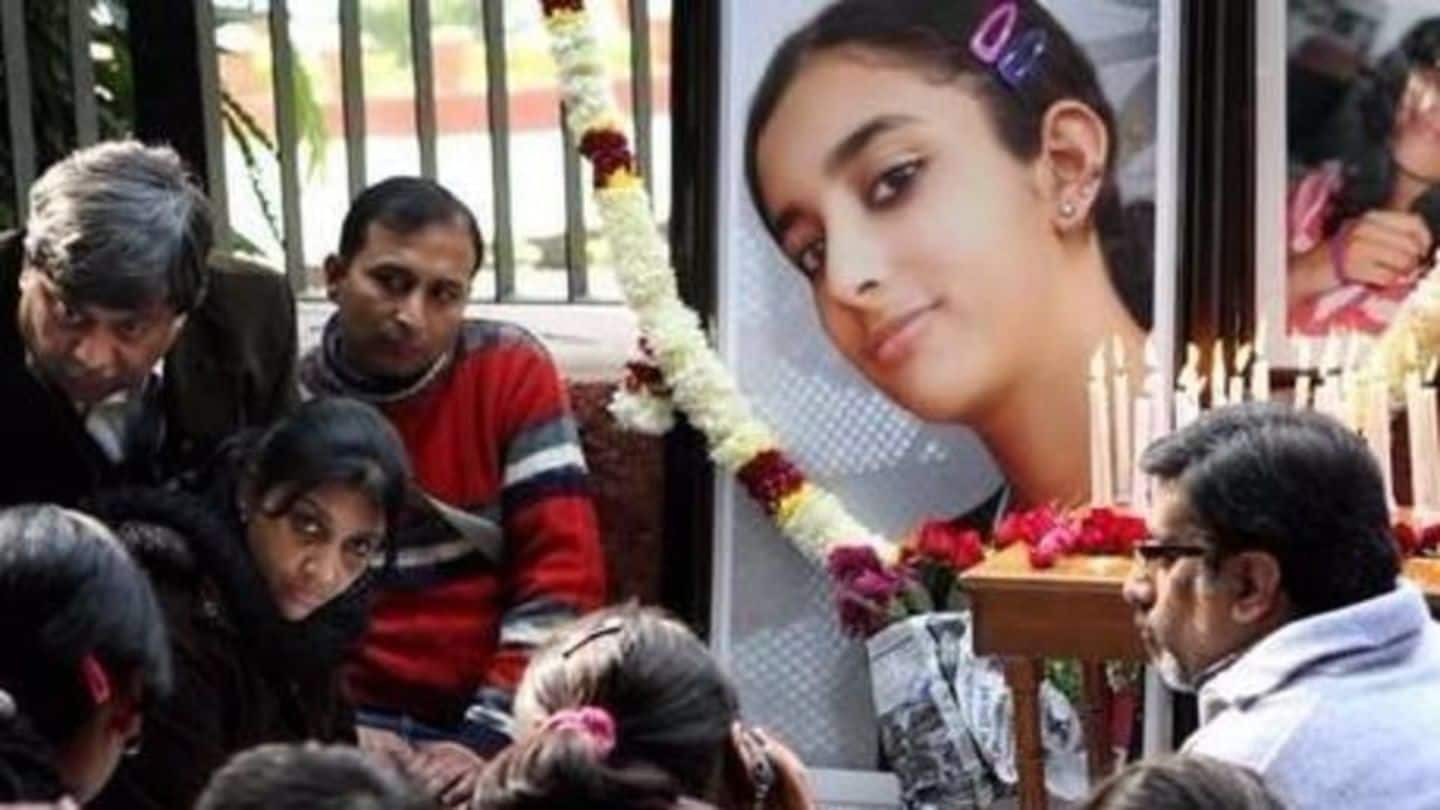
How a questionable court hearing sent the Talwars to prison
What's the story
In many cases, innocents face legal action due to miscarriage of justice. The Aarushi murder was India's defining example. Police declared it an 'open-and-shut' case till their suspect was found dead; CBI accused her parents despite lack of conclusive evidence. The judge's biases sealed her parents' fate. They could have escaped prison, had things gone expectedly in court. Find the disturbing details here.
Beginning
The investigations were botched-up from the start
When the case reached court in 2013, evidence was flimsy. The autopsy doctor had never conducted one on a female and was mystified. Medical opinions were taken from sweepers. A "scientific" test used Shalimar paint as blood. A bizarre ID- hemraj.jalvayuvihar@gmail.com- was used by CBI to summon the Talwars. A doctor attributed Hemraj's swollen penis to sexual stimulation before death based on the "experience of my marriage".
Judge
Enter Shyam Lal, top CBI judge with an illustrious career
It was Judge Shyam Lal who heard the case. Lal, who hailed from UP's Banda district, had completed his LLB with first division. In 1985, he joined the judicial service. Twenty-six years later, he became a special CBI judge. Before his retirement in November'13, shortly after the Aarushi verdict, he had heard a Rs. 5,000cr NRHM scam and the Nithari killings, among others.
Do you know?
Despite Lal's presence, several things went wrong during the hearing
However, in the court, flaws were obvious. A constable who lifted fingerprints and took pictures couldn't recollect crucial details when cross-examined. A maid of the Talwars openly admitted she's been coached. Surprisingly, crucial evidence acquitting the Talwars recorded by initial investigators were completely overlooked.
Timing
Did Lal and son write the verdict before the hearing?
According to journalist Avirook Sen, the whole hearing was a sham: Lal had submitted in two weeks a 210-page verdict that would have taken a month to write (estimations according to Lal's son, who helped write it). Time was spent on finding "good words" and arranging an English typist in Ghaziabad; finally a kabab seller was engaged for the purpose.
Comments
Allahabad HC admits Lal's judgement used 'erroneous analogy', 'vitriolic reasoning'
While acquitting the Talwars four years later, the Allahabad HC observed Lal had "prejudged things" and acted "like a film director". He took evidence "for granted"; used "erroneous analogy" and "vitriolic reasoning" and "tried to thrust coherence amongst facts inalienably scattered". He had relied on his own "partial and parochial approach" and was "unmindful of the basic tenets of law".
Information
Justice for an innocent couple after four years in jail
For the Talwars, it was a relief like no other. They hugged each other as tears rolled down their eyes when the Dasna jail superintendent told them they were acquitted.
Stats
The Indian judiciary needs urgent corrections
The Indian judiciary is plagued by challenges: a lack of judges and of "scientific maintenance" of data are prime. As of November 2016, there were 27 million pending cases in courts and 4,500 benches vacant. The ones that are in the system have to ensure laws are followed and not let personal beliefs creep in while pronouncing verdicts, or there might be more Talwars.